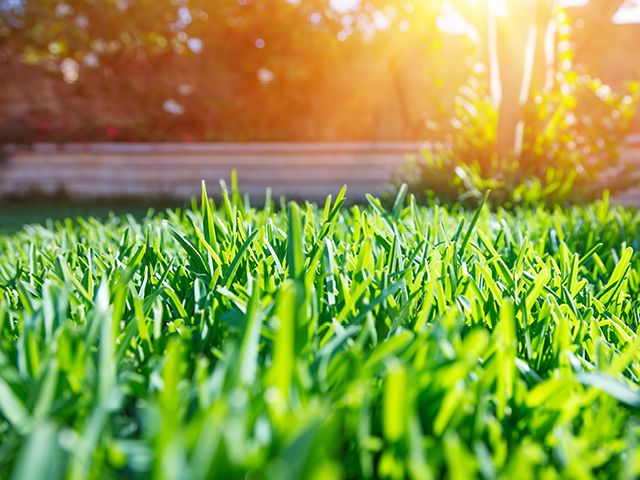Caring for your lawn in summer
26 Jan 2018

Lots of sun and heat might be great for some parts of the garden, but it can take its toll on your lawn. With a little preparation and care you can keep it in good condition even over summer. So here’s our advice for keeping your lawn looking its best all season long.
Mow at the right height
Don’t mow so low in summer. Leaving the grass a little taller helps protect the soil from drying out, which means better root systems and less likelihood of weeds going to seed. You could get really specific about the right height for your exact grass type, but we recommend you make it easy and never cut it lower than 5cm, a little longer is better. And time your mows so you’re never removing more than 1/3 of the height of the grass at a time.
Land, lawns and gardens - get the essentials on maintaining a great lifestyle block. Download your free guide now.
Water properly
This gets hard when council calls for water restrictions, but for the healthiest grass, water your lawn deeply and infrequently, say once a week. And water in the evening, after sundown, or before dawn to avoid evaporation.
Pet pee
The dog doing its business on the lawn during harsh summer conditions can cause parts of the grass to die off. If you see patches going brown where the dog urinates, flush the area with water to dilute the urine in soil.
Avoid squashing it
Driving or parking on the lawn leads to soil compaction, which can kill off grass. Your lawn is already vulnerable during summer’s drought and excessive heat, so limit it to foot traffic to avoid turf damage.
Sharpen your mower blade
A dull mower blade shreds the grass tips, creating ragged edges that go brown. This can easily turn what looks like a healthy lawn into something a lot worse. Keep your mower blades nice and sharp.
Don’t use a catcher
If you’re using the ‘less but often’ method and mowing your lawn at/to the right height, you can leave the clippings where they lie. They won’t be very visually noticeable as they’re small enough to fall to the ground between the blades of grass where they breakdown as mulch, returning valuable nutrients to the soil.
Pests and disease
Several insect pests such as grass grub and porina caterpillar will attack lawn grasses so apply something like Kiwicare LawnPro Lawnguard granules in mid to late summer to protect against damage. Summer is also the time you’re likely to encounter fungal diseases like powdery mildew and brown patch. Apply fungicide if needed, and avoid evening watering to minimise nighttime moisture.
Fertilising
It’s actually best to stop fertilising about a month before your summer really kicks in. Applying extra fertiliser can burn your lawn. Wait until it’s a bit greener again in autumn. However, if you wish to help your lawn through the summer stress, use a mild and slow release fertilizer to avoid over-feeding or burning the lawn. You can also use organic fertilisers like Seaweed fertiliser to help the lawn stay healthy.
Tackling weeds
Summer is a great time to remove or destroy weeds that are in growth before they spread their seeds but as your lawn is already a bit stressed out, you might want to consider hand pulling these and only using herbicide very sparingly.
Prickles
By the time they’re getting stuck in feet it’s too late. Onehunga weed, the most commonly known form of lawn prickle weed, is best controlled with herbicide during spring when they’re having a spurt of growth.
Worst case scenario
Summer is hard and the time when your lawn is likely to suffer most. But even when the grass looks totally brown and beyond saving, remember that it isn't always dead beneath the soil surface. A strong root system will be alive and waiting to recover when it gets a bit cooler and wetter.
For more handy lawn and garden tips, download our free maintenance guide.